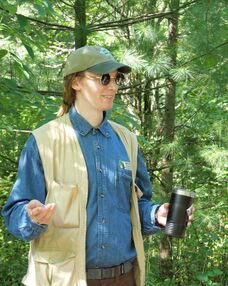OUR MISSION:
"TO ENCOURAGE THE WISE USE
OF OUR NATURAL RESOURCES THROUGH PROMOTION AND EDUCATION."
OUR MISSION:
"TO ENCOURAGE THE WISE USE
OF OUR NATURAL RESOURCES THROUGH PROMOTION AND EDUCATION."
AnnouncementsJuly 9 & August 13 2024 Board of Directors meetings will be held at the Greenwood Township Hall at 6:30pm.
Starting September 10th BOC meetings will be held at the Harrison Public Library @ 6:30pm. Thank you to everyone that attended the Winter Tree ID Hike!
Download Joe's powerpoint on Winter Tree ID below.
New Opportunity for Clare Co. Lake Residents
The Clare County Conservation District would like to host an annual lake forum for the lakefront residents of Clare County. This forum will be attended by the local DNR fisheries biologist and MSU Extension, and the cover three board topics: shoreline management, land use practices, aquatic plant (weed) management. The intended purpose is to educate lakefront property owners of the best management practices to maintain a healthy lake for generations to come. This is also an opportunity for you to ask the different agencies questions and voice any concerns you might have. This forum will also be coupled with 1 to 2 lake visits to show examples of different plants and management practices. Please use the link below to take a short survey to help us better understand the needs of our community. |
Natural Resources NewsInvasive Pest Alert!!
Balsam Wooly Adelgid (BWA) has been found in Missaukee county near the Clare County line. Check your fir trees for signs of the pest and call our forester, Joe Nash, if you suspect you may have BWA on your property. Check out this article for additional information. 2023 Annual Report | ||||||

|
Clare Conservation District
225 W. Main Street PO Box 356 Harrison Michigan 48625 Telephone: 989-539-6401 OFFICE HOURS Located in the Clare County Courthouse Open Monday-Friday 8 am - 4:30 pm The Conservation District is a field office. Call to verify someone will be in the office. |
OFFICE STAFF
Christiane Rathke District Administrator/Soil Erosion Agent [email protected] [email protected] (SESC) Toni Maize Spongy (Gypsy) Moth Coordinator [email protected] Joe Nash District Forester [email protected] Brandi Mitchell MAEAP Technician [email protected] |
Monthly Board Meeting
Location TBD 2nd Tuesday of every month @ 6:30pm Call the office 989-539-6401 ex 4 Any change to this schedule will be posted on this website Board of Directors John Kennedy-chairman Matt Todd Kelly Harrison Jeffrey Simons Benjamin Brown |
